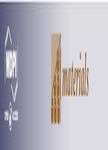版权所有:内蒙古大学图书馆 技术提供:维普资讯• 智图
内蒙古自治区呼和浩特市赛罕区大学西街235号 邮编: 010021

作者机构:Jiangsu Univ Sci & Technol Sch Mech Engn Zhenjiang 212000 Jiangsu Peoples R China Jiangsu Univ Sci & Technol Jiangsu Prov Key Lab Adv Mfg Marine Mech Equipmen Zhenjiang 212000 Jiangsu Peoples R China Yancheng Polytech Coll Joint Technol Transfer Ctr Yancheng 224000 Peoples R China Qilu Univ Technol Sch Mech & Automot Engn Shandong Acad Sci Jinan 250000 Shandong Peoples R China
出 版 物:《MATERIALS》 (材料)
年 卷 期:2019年第12卷第19期
页 面:3096-3096页
核心收录:
学科分类:0806[工学-冶金工程] 08[工学] 0805[工学-材料科学与工程(可授工学、理学学位)] 080502[工学-材料学] 0703[理学-化学] 0702[理学-物理学]
基 金:National Natural Science Foundation of China Natural Science Foundation of Jiangsu Province of China [BK20160563] Postgraduate Research and Practice Innovation Program of Jiangsu Province [SJCX19_0607] National Science Foundation of Shandong Province [ZR2017BEE027]
主 题:hard turning coordinating chip removal finite element analysis AISI52100 hardened steel
摘 要:The hard turning process has been widely used in the field of hard material precision machining because of its high efficiency, low processing residual stress, and low environmental pollution. Due to its undesirably processing quality, it is still not a substitute for traditional grinding, so many studies have reported that the process has been optimized. However, there has been little research on the geometry optimization of hard cutting tools, which have a great influence on the traditional machining process. In this paper, two tools with different rake face shapes are designed. The finite element analysis method is used to compare their performance with a conventional plane tool while turning hardened steel. The results show that the cutting performance of the designed tool T1 and T2 (chip morphology, cutting force, and cutting temperature) and the quality of the machined surface are improved compared with the tool. The cutting force decreased by 12.72% and 14.74%, the cutting temperature decreased by 7.56% and 9.01%, respectively, and the surface residual stress decreased by 26.56% and 28.66%.